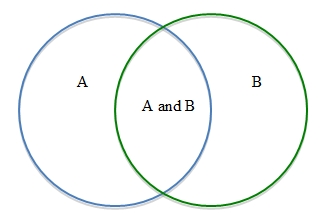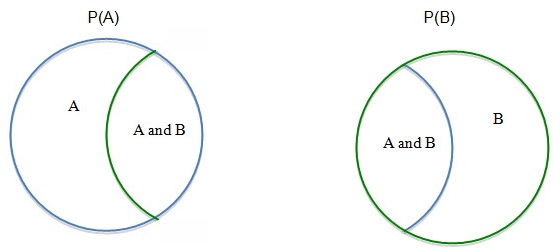Fan Appreciation Night, Part 2
 Resources for this lesson:
Resources for this lesson:
![]() Key Terms:
Key Terms:
Intersection
Union
Addition Rule
> Glossary ![]()
> Calculator Resources ![]()
> Teacher Resources: Instructional Notes ![]()
Create and Analyze
The  is known as finding the probability of the intersection of A and B, and may also be written as
is known as finding the probability of the intersection of A and B, and may also be written as  . Let’s explore what finding
. Let’s explore what finding  means for mutually inclusive events. Since mutually inclusive events can occur at the same time, the situation can be represented with a Venn diagram:
means for mutually inclusive events. Since mutually inclusive events can occur at the same time, the situation can be represented with a Venn diagram:

To find the probability of the intersection of A or B,  , we cannot simply find the
, we cannot simply find the  , because the two probabilities overlap with the section
, because the two probabilities overlap with the section  . This section would be counted twice.
. This section would be counted twice.

Since the  , the union of A and B, is counted twice, you would need to subtract one of these sections to find the
, the union of A and B, is counted twice, you would need to subtract one of these sections to find the  . So, when events are mutually inclusive, you apply the Addition Rule,
. So, when events are mutually inclusive, you apply the Addition Rule,

Let’s explore how to find the probability of winning a t-shirt or a hat.











 for mutually inclusive events, add the probability of the first event to the probability of the second event and then subtract the probability of both occurring.
for mutually inclusive events, add the probability of the first event to the probability of the second event and then subtract the probability of both occurring. 